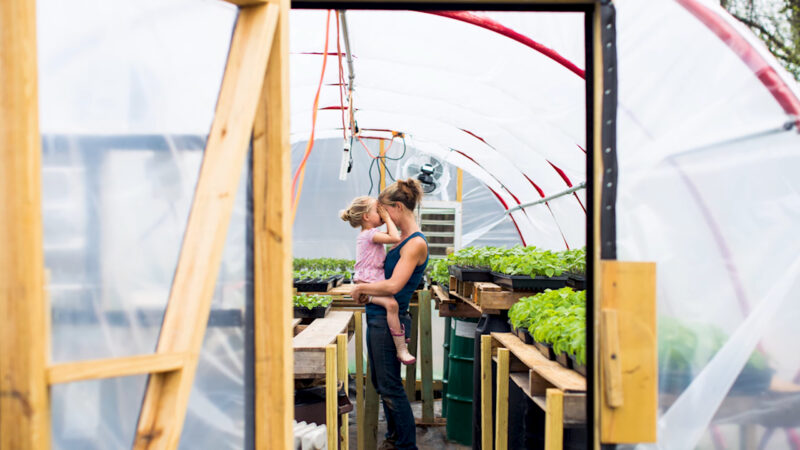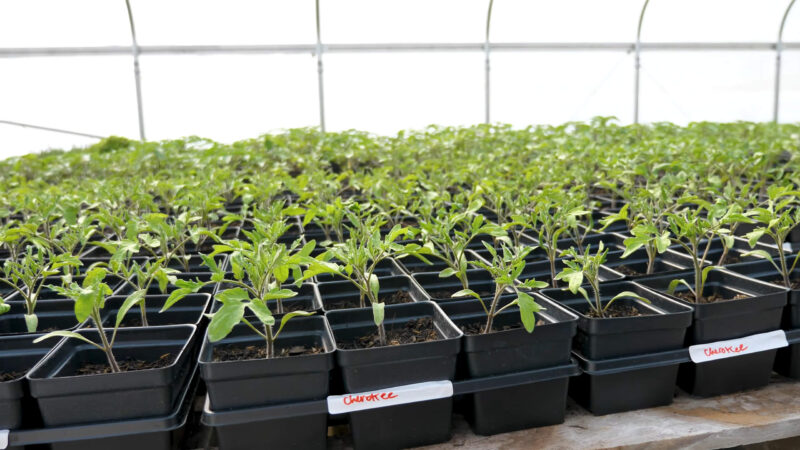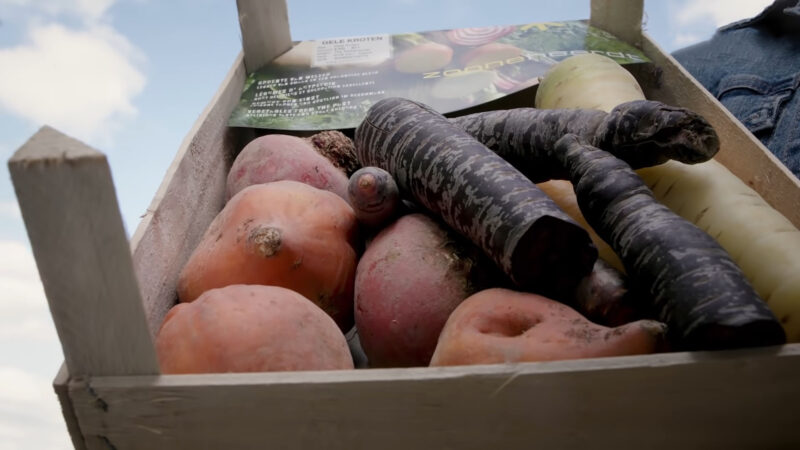Farmers play a crucial role in safeguarding the environment through various sustainable practices and innovative approaches.
Their efforts extend beyond the mere cultivation of crops and rearing of livestock, touching upon critical aspects of environmental conservation such as soil health, water management, and biodiversity preservation.
By adopting methods that align with the natural ecosystem, farmers contribute significantly to the health of our planet.
1. Crop Rotation
Crop rotation is a fundamental agricultural practice where different types of crops are planted in the same area across a sequence of growing seasons. This method prevents the depletion of soil nutrients, as different crops have varying nutrient requirements and contribute differently to the soil’s health.
By alternating crops, farmers can naturally manage soil fertility and reduce their reliance on chemical fertilizers. Crop rotation also plays a crucial role in pest and disease management.
Many pests and diseases are crop-specific; by changing crops regularly, farmers can break the life cycles of these pests, reducing their numbers without the extensive use of pesticides.
Additionally, this practice can improve soil structure and organic matter, leading to enhanced water retention and a decrease in erosion, further contributing to environmental sustainability.
Crop rotation can increase yield by 10-25% compared to monocropping.
2. Cover Cropping

Cover cropping involves growing specific plants for the benefit of the soil, rather than for crop harvest. These plants, often legumes, grasses, or other green plants, are used to cover the soil surface during off-season times when primary crops are not grown.
Cover crops play a significant role in enhancing soil health by preventing erosion, improving soil structure, and increasing organic matter content. They also help in the fixation of atmospheric nitrogen in the soil, making it available for future crops, and suppress weeds, reducing the need for herbicides.
The use of cover crops is a natural way to maintain and improve soil fertility, promote biodiversity, and protect water quality by minimizing runoff.
Cover crops can reduce nitrogen leaching into water bodies by up to 70%.
3. Integrated Pest Management (IPM)
Integrated Pest Management (IPM) is an environmentally friendly approach to controlling pest populations. IPM strategies include a combination of biological, cultural, physical, and chemical tools to minimize the impact on the environment and human health.
By monitoring pest populations and applying control methods only when necessary, farmers can significantly reduce the use of chemical pesticides. This approach not only helps in maintaining the ecological balance but also supports the sustainability of agricultural systems by encouraging the presence of beneficial organisms.
IPM practices can lead to the development of resilient farming systems that are less dependent on synthetic inputs.
IPM strategies can reduce pesticide use by 40-60% in some areas.
4. Conservation Tillage
Conservation tillage is a cultivation method that reduces soil erosion and water loss by leaving crop residue on the field surface. This practice includes techniques such as no-till, minimum tillage, and reduced tillage, all aimed at disturbing the soil as little as possible.
By maintaining a protective layer of plant residue on the soil surface, conservation tillage helps to preserve soil moisture, improve soil structure, and enhance biodiversity. It also reduces the energy and labor costs associated with traditional plowing.
Conservation tillage is a key component of sustainable agriculture, contributing to carbon sequestration and reducing greenhouse gas emissions from farming operations.
Conservation tillage practices can reduce soil erosion by up to 90%.
5. Agroforestry Practices
Agroforestry combines agriculture and forestry technologies to create more diverse, productive, profitable, healthy, and sustainable land-use systems.
By integrating trees and shrubs into agricultural landscapes, farmers can benefit from improved soil fertility, reduced erosion, enhanced biodiversity, and better water management.
Agroforestry practices can include windbreaks, shelterbelts, riparian buffers, and silvopasture, among others. These systems can provide habitat for wildlife, sequester carbon, and offer additional income sources through the production of timber, fruit, and nuts.
Agroforestry represents a versatile approach to land management that addresses the need for sustainable agricultural and environmental conservation.
Implementing agroforestry can increase total farm income by 20-40% through diversified production and enhanced ecosystem services.
6. Organic Farming

Organic farming is a holistic production management system that promotes and enhances ecosystem health, including biodiversity, biological cycles, and soil biological activity. It is based on the use of natural inputs and the avoidance of synthetic pesticides and fertilizers.
Organic farming practices include the use of compost, green manure, crop rotation, and biological pest control. By fostering healthier soils and plants, organic farming reduces the environmental footprint of agriculture, minimizes pollution of water sources, and supports the well-being of wildlife and humans alike.
This approach to farming is instrumental in creating sustainable food systems that are resilient to climate change and capable of preserving natural resources for future generations.
Organic farming systems require 30-50% less energy input per unit of yield when compared to conventional farming methods.
7. Use of Renewable Energy Sources
The adoption of renewable energy sources in agriculture, such as solar, wind, and biomass, represents a significant shift towards reducing the carbon footprint of farming operations.
Renewable energy can power various agricultural processes, including irrigation, heating, and lighting, reducing reliance on fossil fuels. By harnessing the power of renewable resources, farmers can decrease greenhouse gas emissions, lower energy costs, and contribute to a more sustainable and resilient agricultural sector.
The integration of renewable energy into farming practices is a forward-thinking approach that aligns with global efforts to combat climate change and promote environmental stewardship.
The capacity for renewable energy in agriculture has increased by over 35% in the last decade, reducing reliance on fossil fuels.
8. Water Conservation Techniques

Water conservation techniques in agriculture are essential for sustainable water use and the protection of water resources. These techniques include efficient irrigation systems, such as drip or sprinkler irrigation, rainwater harvesting, and the use of drought-resistant crop varieties.
By implementing water-saving practices, farmers can significantly reduce water usage, minimize water wastage, and ensure that crops receive the right amount of water at the right time.
Water conservation is critical in maintaining the balance of ecosystems, supporting biodiversity, and securing water for future agricultural needs. It represents a key aspect of sustainable agriculture in the face of increasing water scarcity and climate variability.
Advanced irrigation techniques, like drip irrigation, can improve water efficiency by up to 90%.
9. Soil Conservation Measures
Soil conservation measures are practices aimed at protecting soil from erosion and degradation, ensuring its long-term fertility and productivity. These measures include contour farming, terracing, the use of soil stabilizers, and the maintenance of ground cover.
By preventing soil loss and degradation, these practices help maintain the soil’s ability to store water and nutrients, support plant growth, and sequester carbon. Soil conservation is fundamental to sustainable agriculture, as healthy soil is the foundation of the food system.
It also plays a vital role in mitigating climate change and preserving natural landscapes.
Soil conservation measures can significantly increase soil organic matter, which is crucial for soil health and carbon sequestration.
10. Habitat Restoration

Habitat restoration in agricultural landscapes involves the reestablishment of ecosystems that have been degraded or destroyed. This can include the planting of native vegetation, restoration of wetlands, and the creation of wildlife corridors.
By restoring habitats, farmers can enhance biodiversity, improve ecosystem services, and create a more resilient agricultural landscape. Habitat restoration contributes to the conservation of wildlife, including pollinators and beneficial insects, which are essential for crop production.
This practice underscores the interconnectedness of agriculture and natural ecosystems, highlighting the importance of coexistence and mutual benefit.
Farms that enhance biodiversity can see a reduction in pest outbreaks and an increase in pollinators, which is vital for crop production.
11. Precision Agriculture
Precision agriculture utilizes advanced technologies, such as GPS, sensors, and data analytics, to optimize field-level management regarding crop farming.
This approach allows for the precise application of inputs, such as water, fertilizer, and pesticides, based on the specific needs of crops at different locations within a field. By targeting the application of resources, precision agriculture can significantly reduce waste, enhance crop yields, and minimize environmental impact.
This technology-driven approach supports sustainable agriculture by improving efficiency and productivity while conserving resources and reducing pollution.
Precision agriculture represents the integration of innovation and environmental stewardship, paving the way for a more sustainable and technologically advanced agricultural sector.
Habitat restoration on farms can increase wildlife populations by creating essential corridors and habitats for various species.
FAQs
Hello, this is Copilot. I will try to answer your questions as simply as possible.
Which of the most environmentally friendly agriculture?
- There is no definitive answer to this question, as different types of agriculture have different environmental impacts and benefits.
- However, some of the most environmentally friendly agriculture practices include organic farming, natural farming, agroforestry, permaculture, and regenerative agriculture.
What is the most sustainable type of agriculture?
- Sustainable agriculture is a system of farming that aims to provide food and other resources for present and future generations, while protecting the environment, the economy, and the society.
- The most sustainable type of agriculture depends on various factors, such as the local context, the available resources, the market demand, and the farmer’s preferences.
How can we reduce carbon emissions in agriculture?
- Carbon emissions in agriculture come from various sources, such as land use change, fertilizer use, livestock, and machinery.
- Some of the ways to reduce carbon emissions in agriculture are: improving soil health, using renewable energy, adopting low-emission practices, enhancing carbon sequestration, and reducing food waste.
What is the difference between organic and natural farming?
- Organic farming is a system of farming that follows certain standards and regulations, and uses organic inputs and methods to grow crops and raise animals.
- Natural farming is a philosophy of farming that mimics nature, and avoids any external inputs and interventions, such as fertilizers, pesticides, and tillage.
Summary
Farmers play a crucial role in protecting the environment through various sustainable practices. They rotate crops to keep the soil healthy, use cover crops to protect it, manage pests with fewer chemicals, and reduce plowing to prevent erosion. They’re also turning to renewable energy, saving water, and improving the land in ways that help plants, animals, and the climate.
All these efforts show that farming can work hand in hand with nature to produce our food while taking care of the earth. Our team at Nacev 2 is covering a wide range of topics about the agriculture and other fields.
